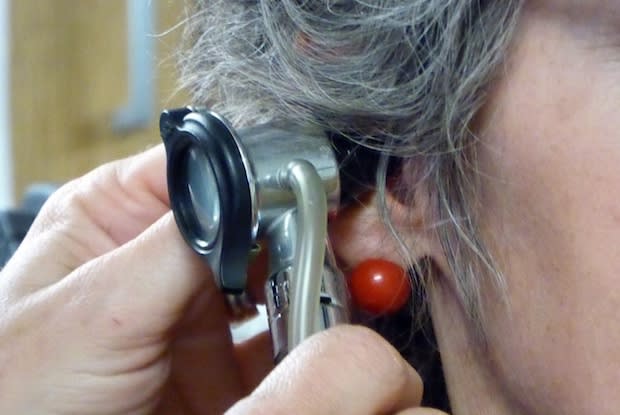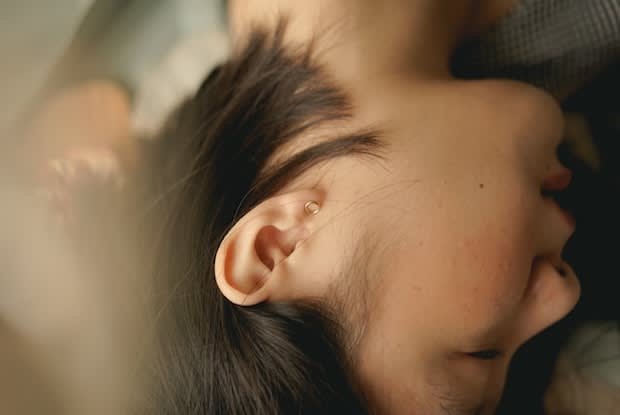Table of Contents
II. Benign Paroxysmal Positional Vertigo (BPPV)
What is Vertigo?
Vertigo is a chronic dizziness disorder that can be a symptom of several conditions. Vertigo can occur when there is a problem with the inner ear, brain, or sensory nerve pathway. Vertigo can occur at any age, but it becomes more common as a person gets older. Depending on the cause of your vertigo, it can be temporary or long-term. The symptoms of vertigo include:
- Balance problems
- Lightheadedness
- Sense of motion sickness
- Nausea and vomiting
- Tinnitus (ringing in the ear)
- Headaches
There are two types of vertigo, peripheral and central vertigo. Peripheral vertigo is the more common of the two and typically involves a problem with the inner ear. The tiny organs in the ear control balance. Central vertigo is less common and includes problems with the central nervous system, including the brain and brainstem. Vertigo can be a symptom of many conditions if not treated with medications like betahistine (Serc). Read on to learn more about disorders that can result in vertigo. [1]
This is the most common form of peripheral vertigo. BPPV involves the sudden sensation that you are spinning or that your head is spinning. It is caused by specific changes in the position of your head. You may feel intense dizziness when you tip your head up or down, lie down, or roll over in bed. The symptoms of vertigo may come and go, and symptoms typically last less than one minute. The structures in your ear are called otolith organs, and they monitor movements of the head and its position to gravity. Those tiny organs contain crystals that make you sensitive to gravity. BPPV can occur when these crystals become dislodged and move into the semicircular canals when you’re lying down. Feelings of dizziness occur when these canals become sensitive to head position changes. BPPV can occur to those over 50 years old or if you have suffered a head injury. [2] Labyrinthitis is also an inner ear disorder. This condition involves two vestibular nerves in the inner ear, which send the brain information about spatial navigation. If one of these nerves become inflamed, then you may develop labyrinthitis. If you have labyrinthitis, you may experience nausea, dizziness, loss of hearing, and vertigo. The symptoms of labyrinthitis typically remedy themselves within a few weeks, but you may need medications to control your symptoms. You may develop this condition if you have experienced the following: As said above, this condition typically sorts itself out, but if your symptoms become severe, you may want to seek the help of a medical professional. If you develop a fever or convulsions, speak to your doctor. [3] Ménière’s disease is a disorder of the inner ear that often results in vertigo and hearing loss. This disorder typically affects only one ear. The cause of Ménière’s is unknown, but it appears to be the result of abnormal fluid in the inner ear. You can develop this disease at any age but is more common in those between the ages of 40 and 60. You may be at risk for Ménière’s if: Because there is no single cause of this disease, doctors believe a combination of factors causes it. Medications like betahistine (Serc) are used to treat dizziness symptoms in those with Ménière’s disease. Betahistine works by relieving pressure in the ear, which lessens symptoms of vertigo. The symptoms of Ménière’s is similar to other inner ear issues: Luckily, symptoms of Ménière’s often improve and may disappear as time goes on. Episodes of vertigo may also lessen over time. [4] Cholesteatoma characterizes a skin growth in an abnormal location, typically the middle ear behind the eardrum. You may develop a cholesteatoma if you experience repeated infections of the ear, which results in a growth of the skin of the eardrum. This growth may increase in size and destroy the middle ear's small bones, resulting in hearing loss, dizziness, and facial muscle paralysis. Poor eustachian tube function is typically the problem that leads to cholesteatoma. The eustachian tube moves air from the back of the nose to the middle ear to equalize ear pressure. If these tubes malfunction, the air is absorbed into the middle ear, and a vacuum is created, which ends up stretching the eardrum. This vacuumed air creates a pouch in the eardrum, which can turn into a cholesteatoma. The symptoms of cholesteatoma include: Unlike the previous disorders, cholesteatomas will not remedy themselves and should never be ignored. In severe cases, inner ear bone erosion can cause infection to spread to the brain and cause an abscess, meningitis, and in rare cases, death. [5] Each one of these conditions requires its own specific treatment. Medications including betahistine (Serc) can work to treat various complaints associated with vertigo. It is typically prescribed for those with Ménière’s disease, but it can be used to relieve other symptoms, such as vertigo, dizziness, and tinnitus. Betahistine is a vasodilator, which means it opens up blood vessels. It is beneficial for vertigo because it dilates blood vessels within the inner ear and relieves pressure from the excess fluid. In the case of more severe conditions like cholesteatoma, surgery may be required to remove the growth in the eardrum. This is essential because an ear infection may spread to other parts of the body, especially the brain. For other conditions like BPPV and labyrinthitis, the purpose of treatment is to relieve symptoms. Labyrinthitis can be treated with over-the-counter medications to relieve nausea and dizziness. In more severe cases, you may require sedatives or corticosteroids to treat bacterial infections. If you experience BPPV and labyrinthitis long-term, you may have to undergo therapy to re-learn balance techniques. Vestibular rehabilitation (a type of physical therapy) involves exercises aimed to improve your balance and reduce dizziness. Some common exercises may include: The content in this article is intended for informational purposes only. This website does not provide medical advice. In all circumstances, you should always seek the advice of your physician and/or other qualified health professionals(s) for drug, medical condition, or treatment advice. The content provided on this website is not a substitute for professional medical advice, diagnosis or treatment.
Benign Paroxysmal Positional Vertigo (BPPV)
Labyrinthitis

Ménière’s Disease
Cholesteatoma

Treatment
